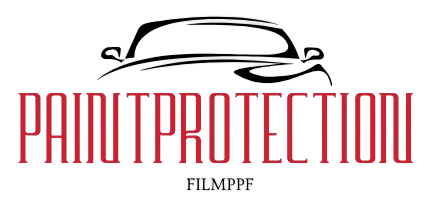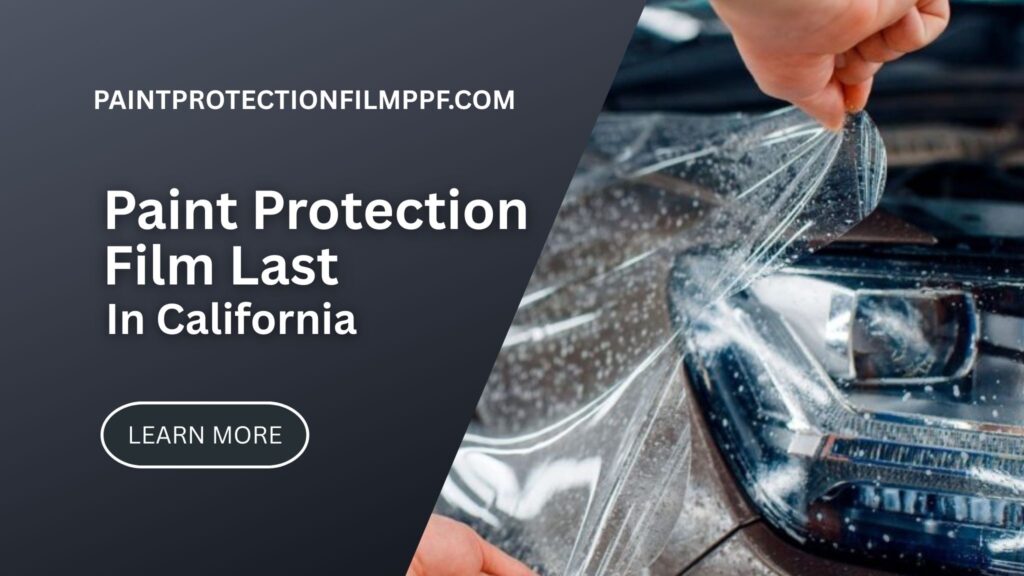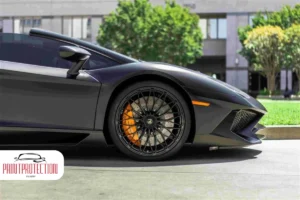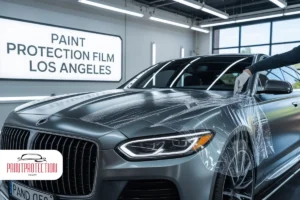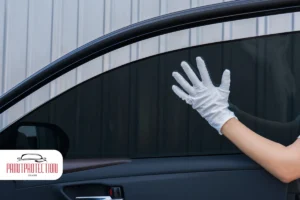How Long Does Paint Protection Film Last? When it comes to preserving your vehicle’s pristine look, Paint Protection Film is one of the best investments you can make. Whether you drive a Tesla in Los Angeles, a sports car in San Francisco, or an SUV in San Diego, PPF acts as an invisible shield against scratches, rock chips, and the harsh California sun. With its self-healing properties and resistance to environmental damage, it provides long-term protection and maintains your car’s showroom shine. But how long does PPF last? Let’s explore its lifespan, the factors that affect durability, and how to extend its longevity.
Table of Contents
What Is Paint Protection Film?
Paint Protection Film is an innovative and transparent self-healing layer applied to the exterior surfaces of vehicles, offering a robust shield against various environmental threats. Crafted from high-quality thermoplastic urethane, this remarkable film is engineered to resist minor scratches, harmful UV rays, and an array of chemical contaminants, all while maintaining the pristine and glossy appearance of your car’s paint.
What sets modern PPF apart is its availability in a variety of finishes, ranging from high-gloss to sophisticated matte options, allowing car enthusiasts to personalize the aesthetic of their vehicles without compromising on protection. This combination of resilience and style ensures that your car not only remains safeguarded against the rigors of daily wear and tear but also stands out with an appearance tailored to your unique taste.
How Long Does PPF Last?
The lifespan of Paint Protection Film depends on several factors, but on average, high-quality PPF can last anywhere from 5 to 10 years. Premium brands may offer warranties covering up to 12 years, making them a worthwhile investment for car owners who want long-term protection. Regular care, professional installation, and choosing the right film can further enhance the lifespan of PPF, making it a practical solution for maintaining your car’s appearance and resale value.

Factors That Affect the Lifespan of PPF:
A variety of factors play a crucial role in determining the longevity of Paint Protection Film on your vehicle.
1. Quality of the Film:
Not all PPF products are created equal. Top-tier brands like XPEL, 3M, and SunTek offer high-quality films with advanced self-healing properties and UV resistance, ensuring a longer lifespan compared to lower-grade films. Cheaper alternatives may not provide the same level of durability, leading to quicker wear and tear, discoloration, and reduced protective abilities. Investing in a high-quality film is essential to maximize its longevity and ensure that your vehicle remains well-protected.
2. Climate and Weather Conditions:
California’s climate varies by region. In cities like Los Angeles, San Diego, and Sacramento, vehicles are exposed to intense sunlight, which can degrade PPF over time. However, ceramic-coated PPF provides enhanced UV protection, preventing premature wear. In coastal areas like San Francisco, vehicles are also exposed to salty air, which can accelerate oxidation and corrosion. A high-quality PPF helps shield the paint from these environmental factors, ensuring longer-lasting protection.
3. Installation Quality:
A professional installation plays a crucial role in PPF longevity. Reputable installers in California use precision-cut templates and heat application techniques to ensure a seamless fit. Poor installation can lead to peeling, bubbling, or premature failure. Additionally, experienced installers ensure that edges are properly wrapped and sealed to prevent contaminants from getting underneath the film, which could lead to deterioration over time.
4. Maintenance and Care:
Proper maintenance extends the lifespan of your PPF. Regularly washing your vehicle with pH-neutral car soap, avoiding harsh chemicals, and applying PPF-specific sealants can help maintain its protective properties. Additionally, using microfiber towels and avoiding automated car washes with harsh brushes can prevent unnecessary wear on the film. Regular detailing and applying ceramic coatings can further enhance its durability and hydrophobic properties.
5. Driving Habits:
Frequent highway driving increases exposure to rock chips and debris, which may cause PPF to wear faster. If you often drive in high-impact areas like San Francisco’s busy streets or the desert highways near Palm Springs, consider full-body PPF coverage for maximum protection. City driving exposes cars to bumper-to-bumper traffic, increasing the chances of minor scratches and scrapes. PPF can serve as a buffer, reducing the impact of minor dings and ensuring the paint remains unblemished.
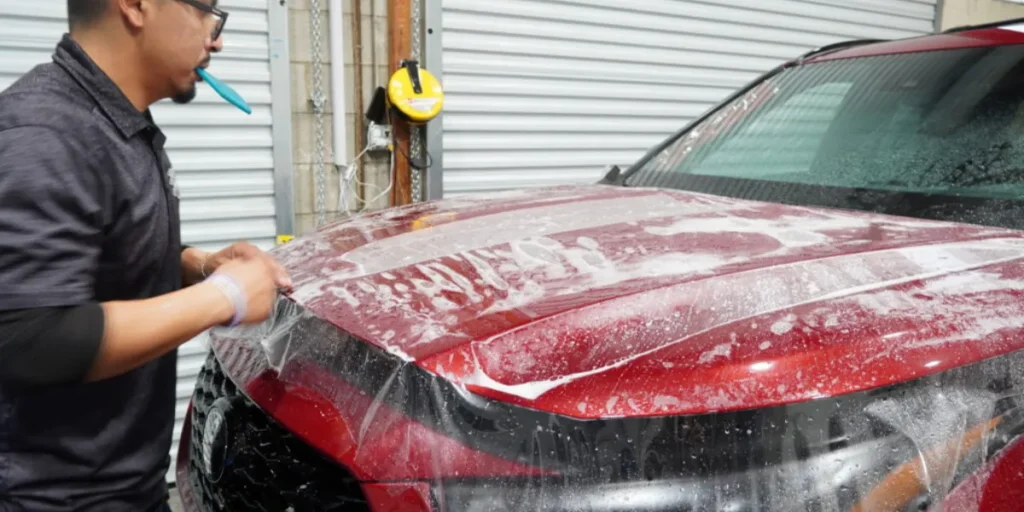
Signs That Your PPF Needs Replacement:
Even the highest-quality Paint Protection Film will eventually reach the end of its lifespan. As time passes, certain indicators may emerge, signaling that it’s time to consider a replacement for your PPF. Here are some key signs to watch for to get your PPF replaced.
- Yellowing or Discoloration: Prolonged exposure to ultraviolet light can lead to low-quality paint protection films developing an unsightly yellow tint, significantly detracting from the car’s pristine appearance over time.
- Peeling or Lifting Edges: Inadequate installation techniques or extended exposure to moisture can result in the edges of the film peeling away, creating an unsightly gap between the film and the vehicle’s surface that not only looks bad but can also jeopardize the underlying paint’s integrity.
- Loss of Self-Healing Properties: When the film’s self-healing capabilities falter, scratches and minor abrasions may stubbornly remain visible even after applying heat. This indicates that the protective layer of your PPF has been compromised, potentially exposing your vehicle’s paint to further damage.
- Visible Stains or Contaminants: The presence of stubborn stains whether from bird droppings, road tar, or bug splatter can signal that the film is deteriorating. These unsightly blemishes not only mar the vehicle’s finish but may also hint at a more serious degradation of the film’s protective qualities.
- Cracks or Brittleness: As time passes, the film may lose its original flexibility, becoming brittle and prone to cracking. This deterioration diminishes the PPF’s ability to safeguard the paint beneath, leaving it vulnerable to scratches and other forms of damage.
How to Extend the Life of Your PPF:
To maximize the longevity of your Paint Protection Film and keep your vehicle looking perfect, follow these essential steps.
1. Choose a Reputable Installer:
Always work with certified PPF installers in Los Angeles, San Diego, or San Francisco who use premium brands and proper techniques. Certified installers are trained to apply the film seamlessly, ensuring that it adheres correctly without bubbles or imperfections.
2. Wash Your Car Regularly:
Use two-bucket washing methods and PPF-safe soaps to keep your film clean without causing damage. Washing your car regularly prevents dirt and contaminants from embedding into the film, reducing the risk of permanent stains.
3. Apply Ceramic Coating Over PPF:
A ceramic coating enhances PPF’s hydrophobic properties, making it easier to clean and extending its durability. This additional layer of protection reduces the impact of environmental contaminants like road salt, bugs, and acid rain.
4. Park in the Shade:
Whenever possible, park in garages or shaded areas to reduce UV exposure, especially in sunny cities like Los Angeles and San Diego. Long-term exposure to direct sunlight can accelerate the aging process of the film.
5. Avoid Harsh Chemicals:
Stay away from abrasive cleaners or strong degreasers that could weaken the adhesive and structure of your PPF. Chemical damage can cause the film to become brittle, reducing its effectiveness over time.
6. Use a PPF Sealant:
Applying a high-quality PPF sealant can help preserve the film’s protective properties and enhance its longevity. These sealants create an additional barrier against contaminants, making maintenance easier and preventing premature wear.
7. Perform Regular Inspections:
Check your PPF regularly for any signs of wear, peeling, or discoloration. Addressing minor issues early can prevent further damage and extend the lifespan of the film. If you notice any defects, consult a professional for repairs or replacement as needed.
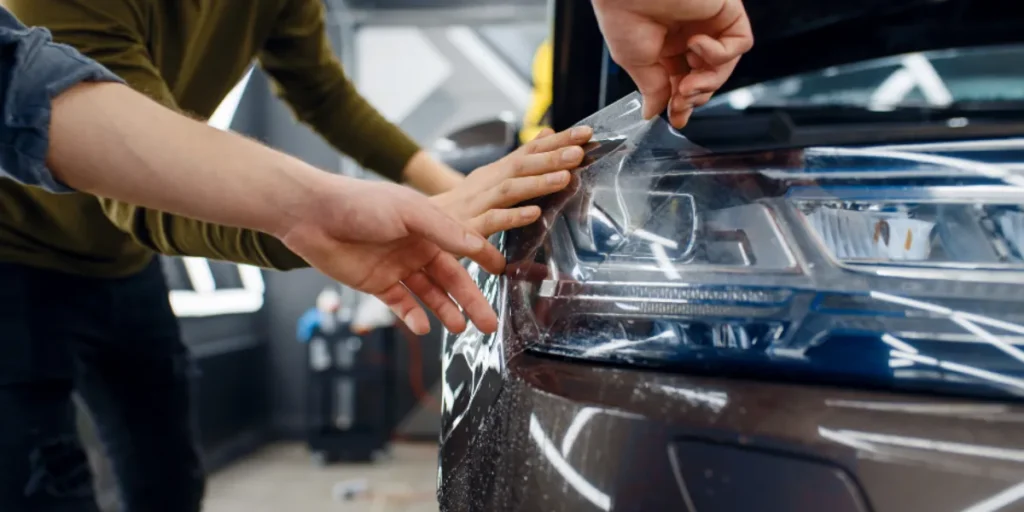
Is PPF Worth It in California?
California’s diverse roadways, ranging from the bustling highways of Los Angeles teeming with vehicles to the breathtaking coastal drives of San Diego that wind along the Pacific Ocean, present a myriad of challenges for every car owner. By investing in premium-grade paint protection film, you can safeguard your vehicle’s stunning appearance while preserving its glossy showroom finish. This protective barrier not only shields your car from unsightly scratches and chips but also defends against the harsh effects of environmental factors, ensuring it remains as striking as the day you drove it off the lot.
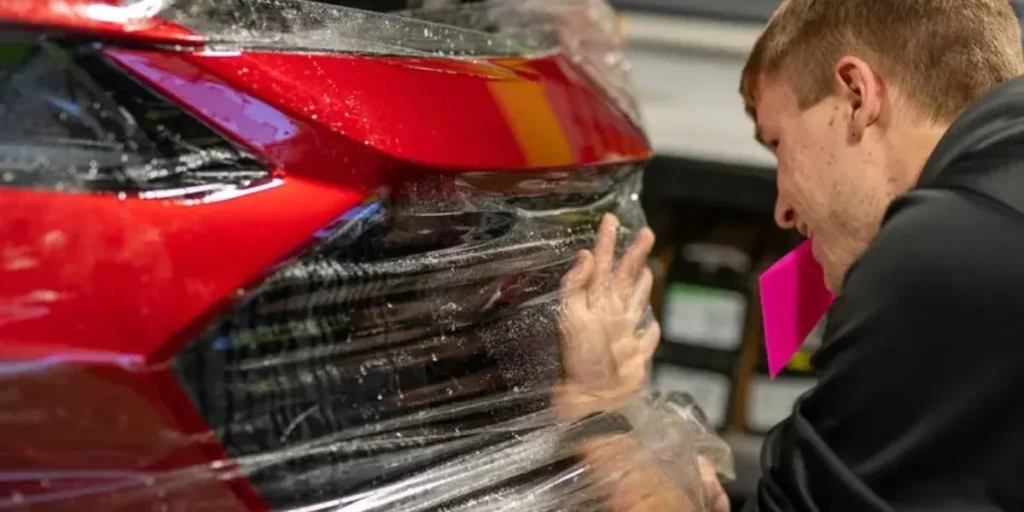
Where to Get PPF Installed in California?
If you’re seeking top-notch PPF installation in California, our company is dedicated to connecting car enthusiasts and owners with highly qualified, verified PPF service providers across the nation. Whether you’re looking to shield your sleek Tesla with full-body protection in the vibrant streets of Los Angeles or require front-end coverage for your high-performance sports car in the picturesque landscapes of San Francisco, we strive to help you discover the most skilled experts right in your vicinity. Your vehicle deserves the very best, and we’re here to ensure you find it.
Final Thoughts:
Paint Protection Film is a savvy investment for car owners in California who are eager to preserve both the value and aesthetics of their vehicles. This high-tech transparent film acts as a shield against the elements, protecting your car’s paint from harmful UV rays, road debris, and scratches. By opting for a reputable installer with a proven track record, you can ensure that the film is applied flawlessly, creating an invisible barrier that enhances the vehicle’s sleek appearance. Furthermore, by adhering to proper care practices such as regular washing and avoiding abrasive cleaners, you can significantly extend the lifespan of your PPF. With this diligent approach, your car will maintain its showroom shine and pristine condition, looking brand new for many years to come.
